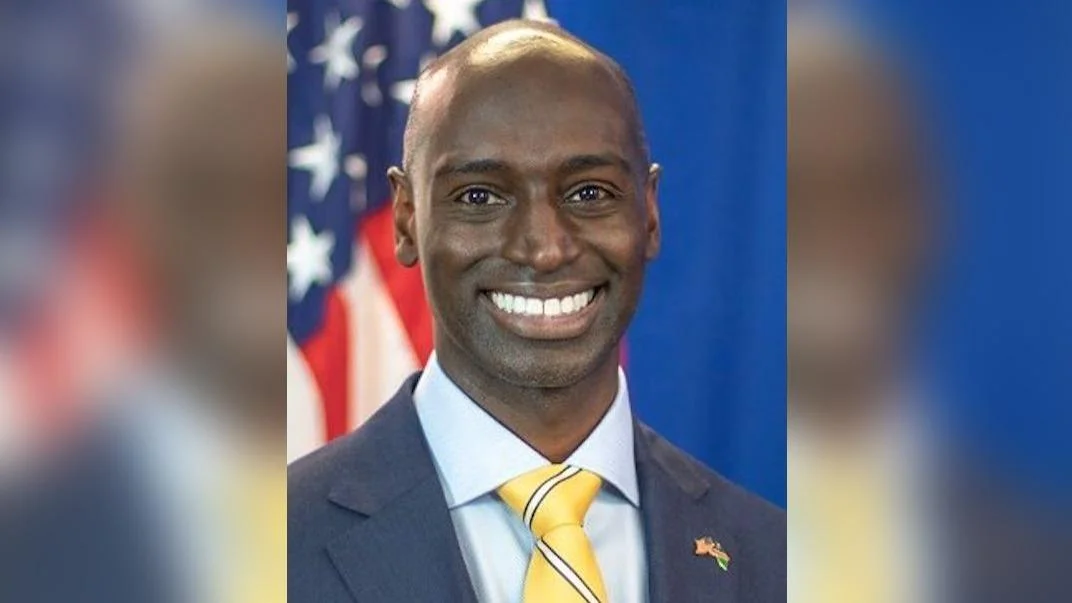Brandon Hudspeth, U.S. Chargé d’Affaires, recently completed a four-day visit to Namibia’s Zambezi Region to assess the impact of two decades of American support through the President’s Emergency Plan for AIDS Relief (PEPFAR). The trip focused on how initiatives funded by PEPFAR have aided Namibia’s Ministry of Health and Social Services (MoHSS) in delivering HIV services throughout the region and country.
During his visit from August 17–20, Hudspeth met with regional officials to discuss the transition of previously donor-funded programs into government-managed operations. “PEPFAR has supported life-saving treatment, prevention, and care services across Namibia for 20 years, helping to reduce new HIV infections and AIDS-related deaths,” Hudspeth said. “Namibia has used that foundation to build one of the most resilient HIV responses in the world. The real success is that programs once fully funded by donors are now led by Namibians — a testament to sustainability, partnership, and shared commitment.”
MoHSS Deputy Executive Director Taimi Amaambo joined Hudspeth during the visit. She highlighted ongoing cooperation between Namibia and the United States: “Since the Ministry has been receiving support from the U.S. government to complement our efforts in the fight against HIV/AIDS as early as 2000 — it’s a testimony to see the impact of how U.S. support has complemented the work of the Ministry of Health,” Amaambo said.
The first day included stops at Katima State Hospital for discussions about future collaboration and integration of donor-supported services into public management. The delegation also visited Sangwali Clinic, where PEPFAR supports programs such as MenStar for men living with HIV—a group less likely to seek consistent care—which has helped achieve a 97% viral load suppression rate at this facility.
At Lyanshulu Comprehensive Community-Based Health Services outreach point, monthly outreach activities were observed that provide remote communities with multi-month dispensing (MMD) and community adherence groups (CAGs), contributing to sustained high rates of viral suppression despite logistical challenges.
The Kwandu Nursery Project was another stop; it is an Ambassador’s Special Self-Help Program grantee focused on land restoration and sustainable livelihoods.
On subsequent days, Hudspeth met with Zambezi Regional Governor Dorothy Kamula Shimusi and Regional Health Director Woita Kapumburu about sustaining progress in HIV treatment and reaching underserved populations. Visits followed at Katima ART Clinic—where U.S.-funded improvements were reviewed—and Walvis Bay Corridor Group Clinic, which plays a key role in serving mobile populations along Southern Africa's trade routes.
Hudspeth also visited Ngweze Clinic where Peace Corps Volunteers assist adolescents living with HIV through coaching and life skills training. At Katima Mulilo Primary Health Care Clinic, he saw how U.S. assistance since 2010 has enhanced TB screening and patient privacy infrastructure.
His itinerary concluded at Mfoma Health Post—a facility built by the United States—which now provides essential health services including CAG meetings, antenatal care, and antiretroviral therapy (ART) for rural communities under MoHSS staff management.
Over twenty years, PEPFAR investments totaling more than $1.3 billion have contributed significantly to Namibia’s HIV response by improving service delivery systems now managed by local authorities.
“We are proud to see how U.S. assistance has enabled Namibian-led solutions to drive results,” Hudspeth said. “The progress achieved here shows how U.S. support and Namibian leadership together can build a sustainable future in the fight against HIV/AIDS.”

